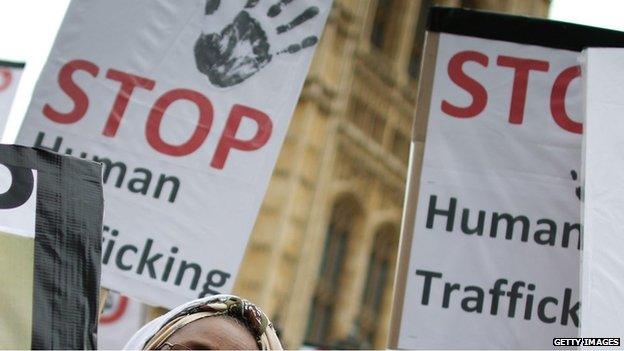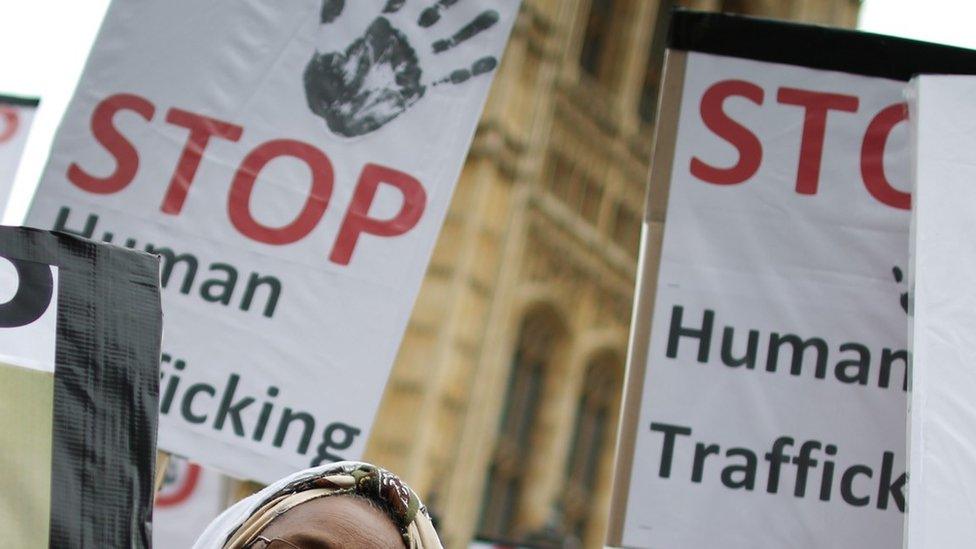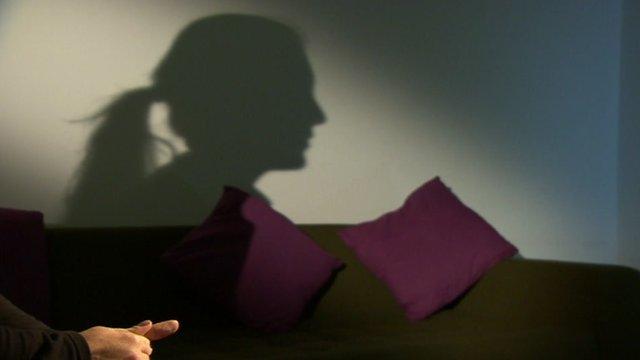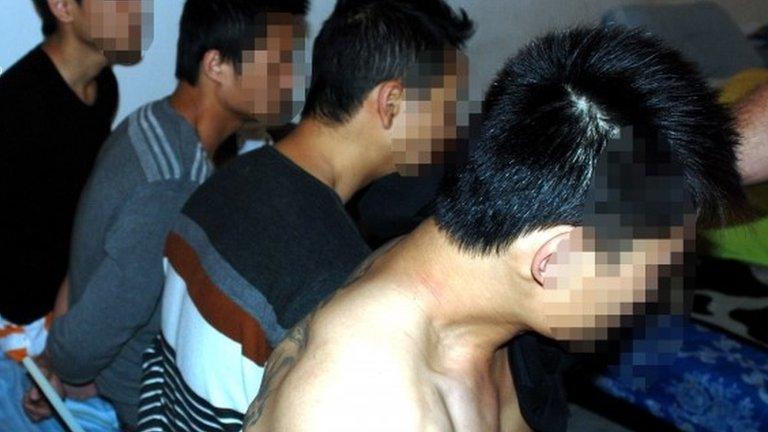Rise in UK trafficking, slavery and exploitation
- Published

The Home Office ran TV adverts earlier this year to highlight modern slavery, including prostitution
The number of people trafficked for slavery or other exploitation in the UK has risen sharply to more than 2,700, the National Crime Agency (NCA) says.
The rise includes people lured to the country after meeting people via online dating or job recruitment sites.
Romania remains the most likely country of origin for victims, followed by Poland and the UK.
The NCA says trafficking does not have to involve crossing international borders.
Investigators say the rise is partly down to better reporting, including an increase in the number of children feared to be victims of sexual exploitation gangs.
False benefit claims
Overall, the agency says there has been a 22% jump in the number of identified suspected victims of trafficking between 2012 and 2013.
The 2,744 suspected victims, thought to be the tip of the iceberg, include 602 children.
The NCA says there has been a surge in reports of sexually exploited children - from 38 to 128 - in the wake of high-profile abuses cases in Rotherham and elsewhere.
Investigators also found cases of adults forced into prostitution, labour exploitation, domestic servitude, or compelled to commit crimes such as making false benefit claims.
More than half of the Romanians in the figures were being exploited for sex, according to the NCA’s annual intelligence assessment.
People from Poland were the most likely victims of labour exploitation - forced to work in agriculture, construction, factories and car washes.
Almost all of the 55 children who were being used to make false benefit claims originated from Slovakia, the report says.
The NCA says victims were being trafficked from Eastern Europe on the expectation of legitimate work which never materialised.
'Marked with tattoos'
In some cases women travelled to the UK with men who they thought were their boyfriends - only to be coerced into prostitution.
Some victims had initially responded to online dating sites or job adverts.
The NCA report adds: “There is limited information available to suggest that traffickers mark potential victims with tattoos, with various symbols signifying ownership or to show that a victim is over 18.
“Information also suggests that victims may be marked with numbers, but the meaning of these numbers is not known.
"Various sources indicate that tattoos are used globally to mark victims of trafficking for sexual exploitation by traffickers and pimps, but the extent to which this is used in the UK is not known.”
Liam Vernon, head of the NCA’s human trafficking team, says: "Put very simply, you brand cattle - and that's how traffickers view people, as a commodity to buy and sell.
“Human trafficking for the purposes of exploitation is an insidious and complex crime and much of the exploitation is hidden from view.”
Fear and control
Mr Vernon says trafficking has "nothing to do with crossing borders", and any recruitment for prostitution, forced labour, slavery or servitude is exploitation.
Speaking about the British victims, he adds: "With UK girls, we see them groomed, we see them recruited, we see them moved around, we see them kept by gangs for sexual exploitation, gratification, or financial gain.
"For UK men, we see that happen, recruited by abduction, fear, controlled, for purpose of slavery, for purpose of labour."
The government’s Modern Slavery Bill is currently before Parliament and expected to become law before the 2015 general election.
Ministers say it simplifies complex laws on exploitation and increases the maximum sentence to life.
The bill also proposes to ensure victims cannot be prosecuted for most offences committed while being controlled - and receive reparations from their abusers.
Labour says it will create a "specific offence of serious exploitation".
It says this will make prosecutions easier and prevent the "undercutting of local workers and responsible businesses by the exploitation of low-skilled workers from Europe".
- Published31 July 2014

- Published4 June 2014

- Published8 April 2014

- Published18 February 2014

- Published16 December 2013

- Published24 November 2013

- Published22 November 2013

- Published17 October 2013
